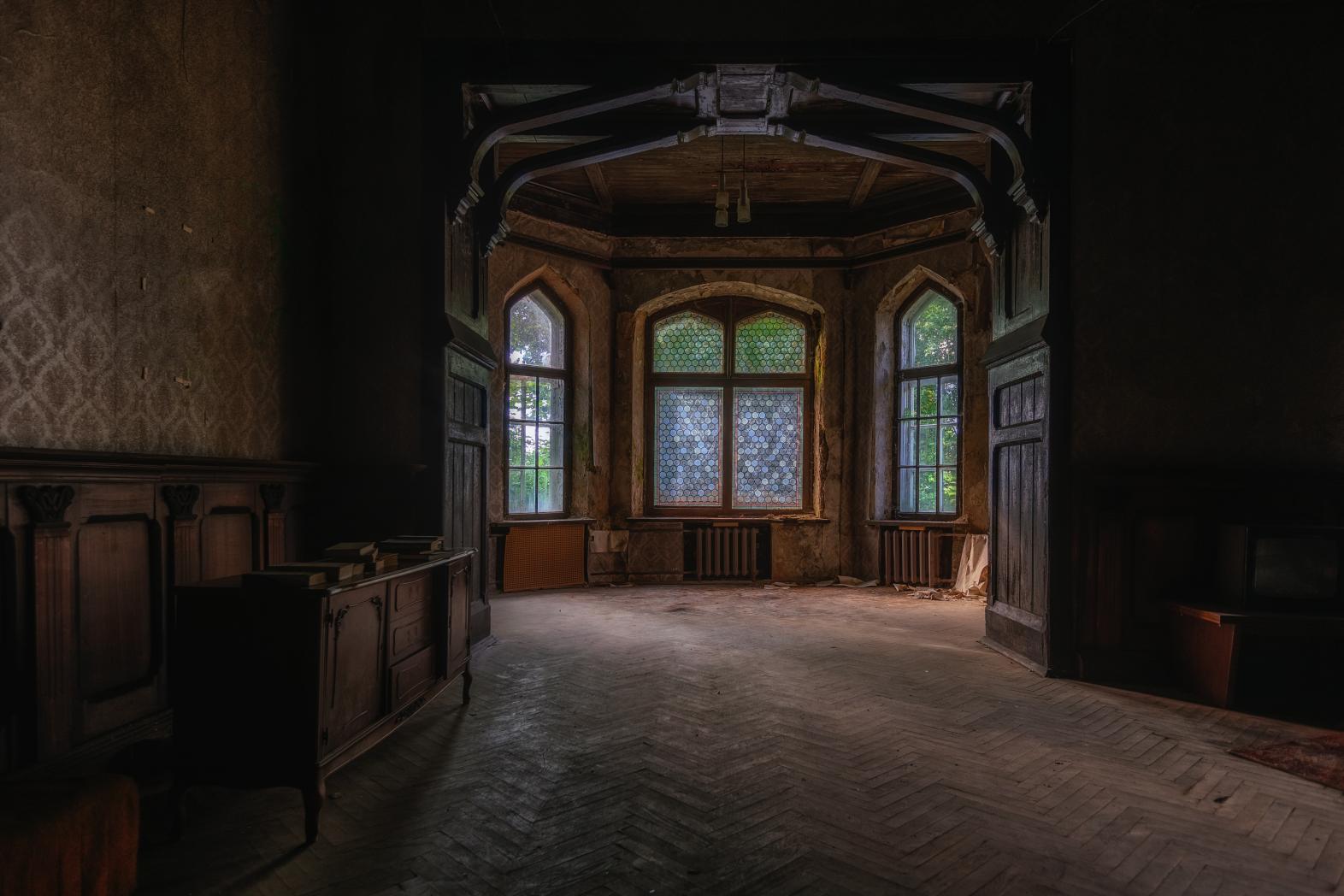Ghosts, Ghouls, and Faulty Furnaces: These Things Go Bump in the Night

Mr. G sat alone in his cold rental kitchen, eating fruit late at night. He'd developed this habit after his family's house burned down in 1912, forcing them to move into this new place. But this house felt oppressive, like unseen eyes watched them constantly. This eerie feeling drove Mr. G to eat facing the door, determined to catch a glimpse of the elusive intruder.
It wasn’t just the father feeling this way, either. The children had been showing no interest in their toys or each other, becoming wilted heaps of Victorian-era clothing and sadness even though it was Christmas. Motivated by her own sorrow and unease, Mrs. G packed them up and left to visit family, hoping a change of scenery would lift their collective spirits.
Issues at home escalated for Mr. G and his staff almost as soon as Mrs. G and the children left. There were several reports of disembodied footsteps on the hardwood where carpeting was laid, distorted faces staring back from the mirror in the evening, well-dressed apparitions that came and went, and even full hallucinations of the fire department approaching. The incidents and specters disappeared almost as quickly as they arrived, leaving more questions each time.
The Culprit Was, In Fact, Mostly Invisible
The truth, however, was much more sinister. Mr. G's brother suspected they were being poisoned, and an inspection revealed a faulty furnace flooding their home with carbon monoxide. The repairs were made, and the "ghosts" disappeared.
The children’s optometrist would confirm the CO poisoning later in their lives when he noted ocular damage caused by excessive CO exposure.
The story of Mr. G and his family is real, and was detailed in 1921 in an article by W.H. Wilmer in the American Journal of Ophthalmology. It was not an isolated incident. CO poisoning has been misdiagnosed as ghostly activity for decades, and it's a significant public health threat. It can cause hallucinations, confusion, and even death.
Children Are Especially Vulnerable
The children in the G household were most severely impacted by the carbon monoxide exposure, displaying more physical symptoms due to their smaller bodies. Since children often exhibit flu-like symptoms when exposed to CO, parents and caregivers tend to overlook or misdiagnose these warning signs. Moreover, the parents' eerie feelings and hallucinations were unintentionally transferred to their children, adding to the distress.
Help Ensure it Doesn’t Happen to You
While Victorian remedies for rambling spirits may have included salt circles and iron horseshoes in doorways, those did nothing to prevent CO-induced hallucinations. Luckily, modern protection against rogue apparitions can be just as easy if the horseshoe is swapped for a CO alarm or detector.
CO alarms in the home can give parents peace of mind and maybe even a better night's sleep without concern for what’s in their children’s closets, under the bed, or right out in the open; poisoning the air.
Further, CO alarms can save lives, not just sanity. CO poisoning is a serious public health threat, claiming hundreds of lives and sending more than 100,000 people to the emergency department in the United States each year.
Sadly, many Americans underestimate the risk of CO or incorrectly assume that detection is provided through smoke alarms present in the home. Even though 89% of American adults own some type of CO-producing device – such as gas-powered appliances, furnaces, and water heaters – 45% are unaware that these devices can be potential sources of CO exposure. Even worse, 86.2 million Americans have no means of detecting CO in their homes, according to ULSE research. Learn more about these and other statistics in our report, Understanding the Silent Threat: Early Detection and Prevention of Carbon Monoxide Poisoning.
Who You Gonna Call?
UL Standards & Engagement has a long history of mitigating threats like CO poisoning through the development of stringent safety standards and testing requirements. We stop short of including ghostbusting among our areas of expertise. After all, waking to an activated alarm alerting to high CO levels is far less terrifying than seeing spirits.
UL 2034 Standard for Single and Multiple Station Carbon Monoxide Alarms helps ensure alarms are effective in detecting elevated CO levels before they reach a point at which humans have difficulty reacting. The standard was updated in August 2023 to include non-dwelling units such as hotels, restaurants, and other public spaces, and requires CO alarms to emit an audible end-of-life tone indicating the need for replacement.
Don't let a faulty furnace turn your home into a haunted house. Install a CO alarm to protect you and your family from the silent threat of CO poisoning.